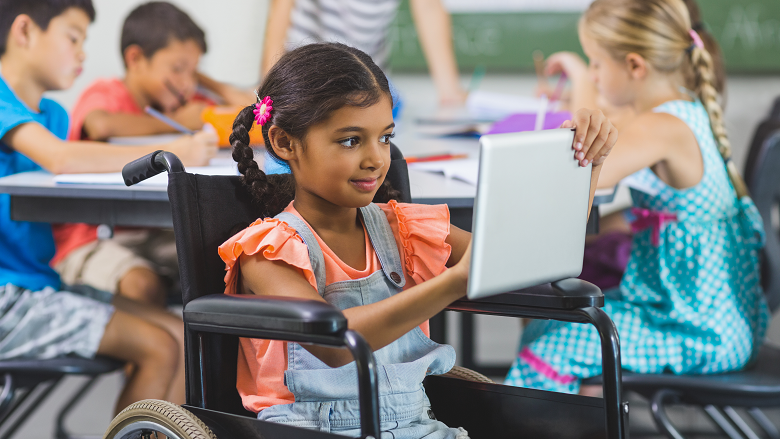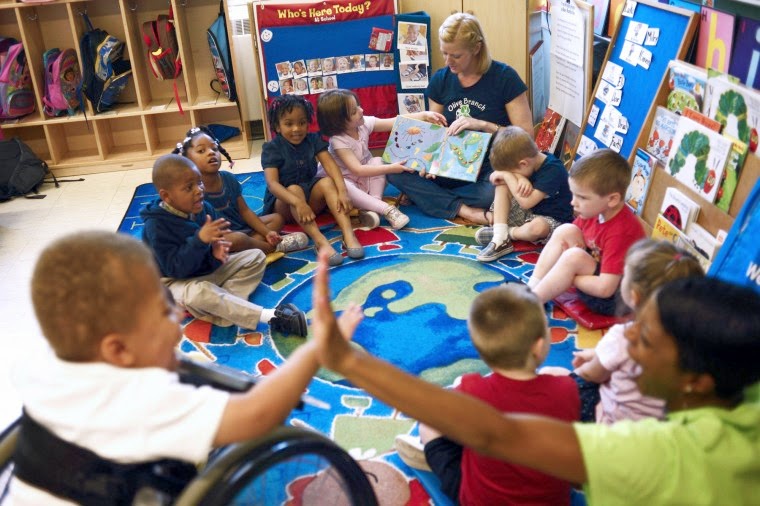The practice of inclusive education for children with disabilities revolves around the integration of students with different abilities into regular classrooms. Its primary goal is to provide equal opportunities for every child to learn, participate, and thrive, irrespective of their physical, intellectual, or emotional obstacles. This approach is supported by flexible teaching strategies, easily accessible learning resources, and a nurturing environment that embraces diversity and encourages mutual respect among students. The advantages of inclusive education are abundant: it fosters understanding and interpersonal abilities among students, equipping them for a varied society; improves academic performance by tailoring instruction to individual learning preferences; and supports the emotional and mental health of children with disabilities by validating their position in the community. Inclusive education not only eliminates obstacles to learning for students with disabilities, but also nurtures a climate of empathy and tolerance, preparing all students for the diverse and inclusive society they will encounter in adulthood.

Understanding the Spectrum of Disabilities:
The initial phase toward variability is to comprehend the various kinds of disabilities, which could refer to visual, hearing, mobility, and cognitive issues. Realizing the unique demands of each disability enables educators to adjust their materials and methods of instruction successfully. This understanding ought to contain an awareness of the many ways that children with disabilities manage knowledge, interact with their surroundings, and exhibit their knowledge.
Incorporation of Assistive Technologies:
Incorporating assistive technologies is a critical component of broadening educational resources. This equipment may range from simple tools such as text-to-speech programs for dyslexic students, to more advanced solutions, including braille readers for visually challenged students or speech-to-text software for individuals with mobility issues. The objective is to give students the resources they need to navigate the curriculum on their own productively.
Adapting Content Delivery:
Changing the method of delivering educational material can have a profound effect on the inclusivity of teaching. This may involve presenting information in various formats such as visual, auditory, and tactile, to accommodate different learning preferences and disabilities. For example, utilizing visual aids, interactive models, and hands-on activities can assist in making abstract concepts more tangible for students with intellectual disabilities.
Creating an Inclusive Classroom Environment:
Beyond technology and instruments, creating an equitable learning climate is indispensable. This includes creating physically accessible areas for students with mobility difficulties, certifying that every learner is represented in the materials utilized, and fostering a culture of dignity and compassion among students. Teachers should also get instruction related to inclusive education approaches so that they may successfully meet varied learning requirements.
Personalized Learning Plans:
Acknowledging the distinctiveness of every child, customized educational strategies play a crucial role in addressing individual requirements. These strategies, crafted through close cooperation among parents, therapists, and the students themselves, detail precise objectives, adjustments, and evaluation methods that cater to each child’s unique abilities and aspirations. Personalized plans guarantee that learning remains pertinent and within reach for every student, enabling them to advance at their own rhythm.
Arts and Crafts in Inclusive Education
Arts and crafts perform a significant role in inclusive learning because they provide diverse and adaptive activities that may accommodate a broad spectrum of abilities and interests. Children may use creative projects to convey themselves, learn about diverse cultures and traditions, and improve their fine motor abilities. This hands-on technique for learning may be especially effective for youngsters who struggle with traditional academic tasks, giving them a sense of success and satisfaction.
Enhancing Learning through Diamond Painting
In the realm of arts and crafts, diamond painting emerges as a unique tool to enhance the learning process for children with disabilities. By integrating kits such as Queen Elizabeth Diamond Painting, Princess Diana Diamond Painting, Salvador Dali Diamond Painting, and Vincent Van Gogh Diamond Painting, educators can offer engaging, tactile learning experiences. These activities not only foster fine motor skills and attention to detail but also introduce students to famous figures and cultural icons in a non-traditional, interactive manner. This approach allows children to connect with historical and cultural content on a personal level, making learning more relatable and memorable.
Promoting Social Skills through Group Activities
Group activities in welcoming atmospheres may greatly improve social skills and peer connections. working on shared goals and projects, such as group murals or collaborative crafts, teaches children to cooperate, empathize, and appreciate the opinions of others. Such encounters are crucial in creating a healthy classroom culture in which all students appear connected and accepted.
In conclusion, inclusive education is not just a methodology but a philosophy that values diversity, equity, and accessibility in the learning environment. These creative practices serve to develop fine motor skills, attention to detail, and personal expression among children with disabilities. As we move forward, it is imperative that we continue to embrace and expand upon such inclusive strategies, ensuring that every child has the opportunity to thrive academically, socially, and emotionally. Through commitment, creativity, and collaboration, we can cultivate an educational landscape where diversity is celebrated, and learning is accessible to all.


No comments yet